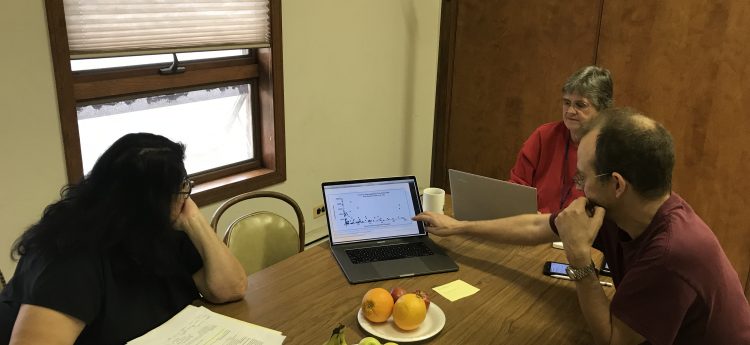By Sarah Wilkins, Project Manager
As a Thriving Earth Project Manager, I am always thrilled to see the world out from behind my computer screen: meeting a project team in person, visiting the lands of a First Nation or walking a neighborhood with a community leader. I was granted such a chance in late September and early October this year when I visited three environmental justice communities—that is, socioeconomically vulnerable communities that disproportionately suffer environmental health burdens. In three parts, I share my reflections and welcome your reactions. Part 2 / Part 3
Part 1: Justice for Chicago’s Flood-Prone Suburbs
While attending a conference in the Chicago-land area, I met with the Cicero-Berwyn Thriving Earth Exchange team to discuss their project plan. We gathered around a small wooden table adorned with a bowl of fruit at Gethsemane Lutheran Church in Cicero, Ill. Delia Barajas, founding director of the community organization Ixchel, and Reverend Diane Johnson represent the community voices concerned by flooding and drainage issues throughout Cicero and Berwyn, a pair of densely populated Chicago suburbs with large Latino and African-American communities. Water seeps into Barajas’ basement via the foundation and Johnson’s basement floods during a steady rainfall. A combination of clay-based, impervious soils and flat-slope topography cause water to back up into residents’ yards. The water is often mixed with sewage due to Cook County’s outdated and crumbling combined storm-sewer system.
We discussed concrete steps the community would take in partnership with Dr. Joseph Schulenberg, a civil engineer from the University of Illinois-Chicago; for example, the team is working to obtain government records on the size and location of sewer lines.
But we also talked about the long-term future for their environmental justice community. Barajas and Johnson shared concerns related to gentrification and loss of a community identity, concerns that are valid and likely complicated to answer: What will happen if the neighborhood flooding issues are solved, green spaces installed, and we are left with a safer, healthier environment and community? Will we be able to afford living here, or will these improvements drive gentrification and push those of us who are most vulnerable out of the city we love and know?

